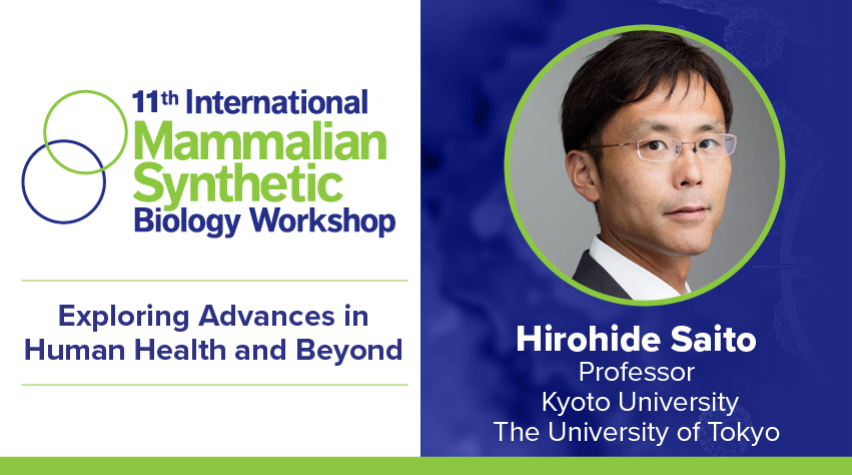
Organized by AIChE’s Society for Biological Engineering (SBE), the 2024 International Mammalian Synthetic Biology Workshop (mSBW) takes place August 6–7 in Boston, Massachusetts. This is the premier meeting on mammalian synthetic biology and its applications, where leaders in synthetic biology join with experts from related fields to explore synthetic biology research, including new technologies with increasing translation into industry and clinical settings. Reserve your spot by June 28 for best rates.
We caught up with mSBW speaker Hirohide Saito, Professor at Kyoto University / The University of Tokyo, to discuss the future of mammalian synthetic biology, and what he’ll be speaking about at mSBW.
What inspired you to do research in this field?
I was intrigued by the question of how life originated, which led me to delve into research on the RNA world hypothesis. This hypothesis suggests that RNA played a crucial role in the early stages of life’s evolution. Starting from this point, I embarked on studying RNA synthesis biology. What particularly fascinated me was the versatility of RNA, its ability to evolve in test tubes, and the potential to design sequences and structures. This dynamic molecule not only serves as a messenger in biological processes, but also holds the key to understanding the fundamental principles underlying the emergence of life itself.
How do you envision this field solving some of the challenges in engineering and society?
Addressing infectious diseases and illnesses, as well as promoting healthy life expectancy, are socially important. Mammalian synthetic biology has the potential to solve these issues. In particular, I am focusing on RNA-based in vivo reprogramming technology. If we can achieve more freedom in cell-fate conversion, it holds great potential. Additionally, RNA is a molecule worth engineering due to its significant functional changes when using modified bases and special structures.
What advice would you give to students or young professionals thinking about a career in mammalian engineering?
I would advise students or young professionals interested in a career in mammalian engineering to embrace the fact that there are still many unknown phenomena within mammalian cells. By earnestly studying these phenomena and deriving new technologies from such studies, they can contribute to a deeper understanding of life processes. I encourage them to explore research into understanding and controlling biological phenomena involving RNA and RNP. It is my hope that more young researchers will fearlessly take on these challenges and contribute to the advancement of knowledge in this field. Let’s tackle these challenges without hesitation!
What is the one big takeaway that you would like audiences to gain from your talk?
The main takeaway from my talk is the transformative potential of RNA in synthetic biology. With advancements in technology, we can now evolve RNA in test tubes and even generate it using AI techniques. This opens up avenues to control gene expression within cells and to engineer enzymatic activities. The cutting-edge technologies based on RNA and RNA-protein (RNP) interactions in synthetic biology harbor significant promise in drug discovery. Understanding and harnessing the power of RNA holds the key to unlocking innovative solutions in biotechnology and beyond.
About SBE
Established in 2004, the Society for Biological Engineering is a technological community for engineers and applied scientists integrating biology with engineering. Members of SBE come from a broad spectrum of industries and disciplines and share in SBE’s mission of realizing the benefits of bioprocessing, biomedical, and biomolecular applications. Learn more about SBE.


